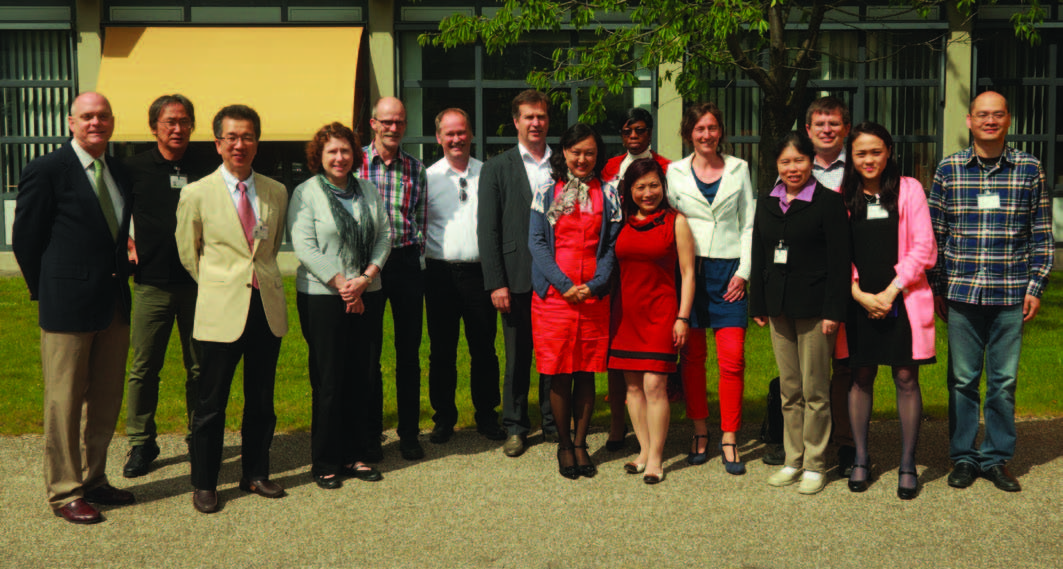Cigarettes and Beyond: Testing Tobacco Products Around the World
Tobacco use causes 1 in 10 deaths among adults worldwide. The World Health Organization (WHO) Framework Convention on Tobacco Control (FCTC) was adopted in 2003 and fully implemented in 2005. The goal of FCTC is to protect present and future generations from the devastating health, social, environmental and economic consequences of tobacco consumption and exposure to tobacco smoke. Article 9 of the FCTC focuses on the regulation of tobacco products and requires laboratory methods to be developed to measure harmful chemicals in tobacco and tobacco smoke.
WHO Tobacco Laboratory Network

June 3-5, 2015 TobLabNet meeting at National Institute for Public Health and the Environment (RIVM), The Netherlands. CDC scientists and colleagues from Burkina Faso, China, France, Japan, Singapore, The Netherlands, and the World Health Organization participated.
To develop the needed laboratory methods, the WHO Tobacco Laboratory Network (TobLabNet) was created. TobLabNet is a global network of more than 30 laboratories, located in all six WHO regions, that work together to create methods to measure harmful chemicals in tobacco and tobacco smoke. Having data on levels of harmful chemicals in tobacco products in their countries helps nations when making decisions on how to regulate tobacco products and protect the health of their citizens. The results of TobLabNet’s work are published in the scientific literature, and the laboratory methods are available to researchers and public health decision makers on WHO’s website.
CDC has been a full member of TobLabNet from its beginning. CDC scientists have participated in studies to develop methods to measure nicotine, humectants (chemicals that absorb and retain moisture), and toxic and cancer-causing chemicals like ammonia and benzene. The laboratory work is done with automated smoking machines that puff cigarettes in a consistent manner to create the smoke measured by the scientist. While no person smokes like a machine, information gained from using a common laboratory method and automated smoking machines helps laboratories validate methods and produce results that can be compared to other laboratories.
Increased use of Electronic Nicotine Delivery systems

Automated cigarette smoking machine generates smoke used to measure toxic and cancer-causing chemicals.
Initially the focus of TobLabNet was on traditional cigarettes because they are the most common way tobacco products are used, but recent attention has been turned to the other tobacco products that people use to consume nicotine. A class of tobacco products that is increasing in use is “Electronic Nicotine Delivery systems (ENDS),” which include electronic cigarettes, also known as e-cigarettes. Initially e-cigarettes were designed to resemble the size and shape of a cigarette, but newer products resemble cigars or hookahs (water pipes); other ENDS are large and have refillable tanks. ENDS differ from traditional tobacco products by using a battery to produce a cloud of humectant particles. The cloud of particles, or “vapor,” usually contains nicotine and flavored chemicals. E-cigarettes are available in most countries. In the United States, CDC surveys have found that the use of e-cigarettes by middle and high school students is rising at a concerning rate. In addition to traditional tobacco products like cigarettes, cigars, and smokeless tobacco, CDC scientists are also studying e-cigarettes and exposure to e-cigarette vapor. CDC scientists and TobLabNet are moving quickly to develop methods that will allow the chemicals in e-cigarette liquid and e-cigarette vapor to be measured and evaluated.
For further information, contact: Dr. Patricia Richter at pir1@cdc.gov.